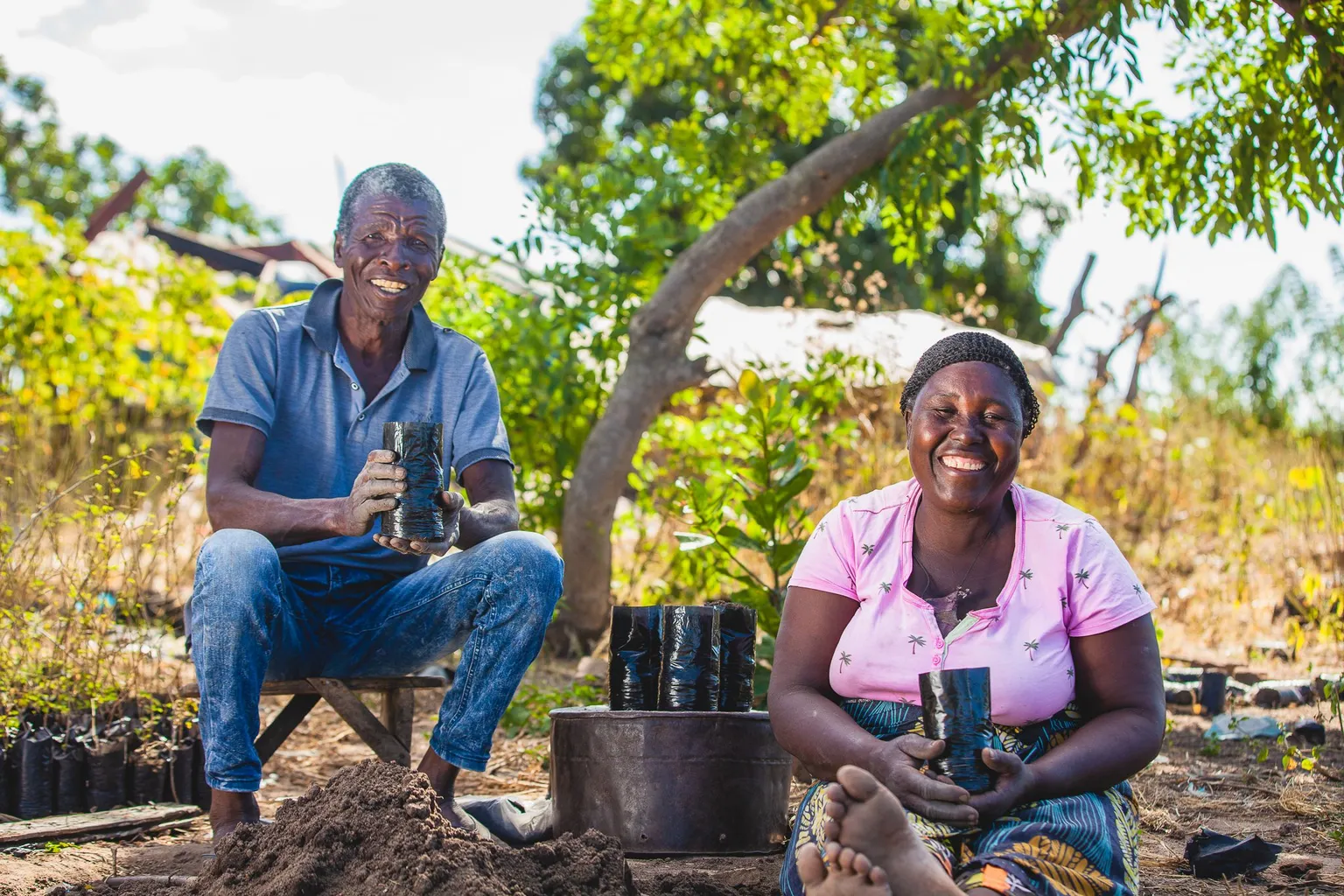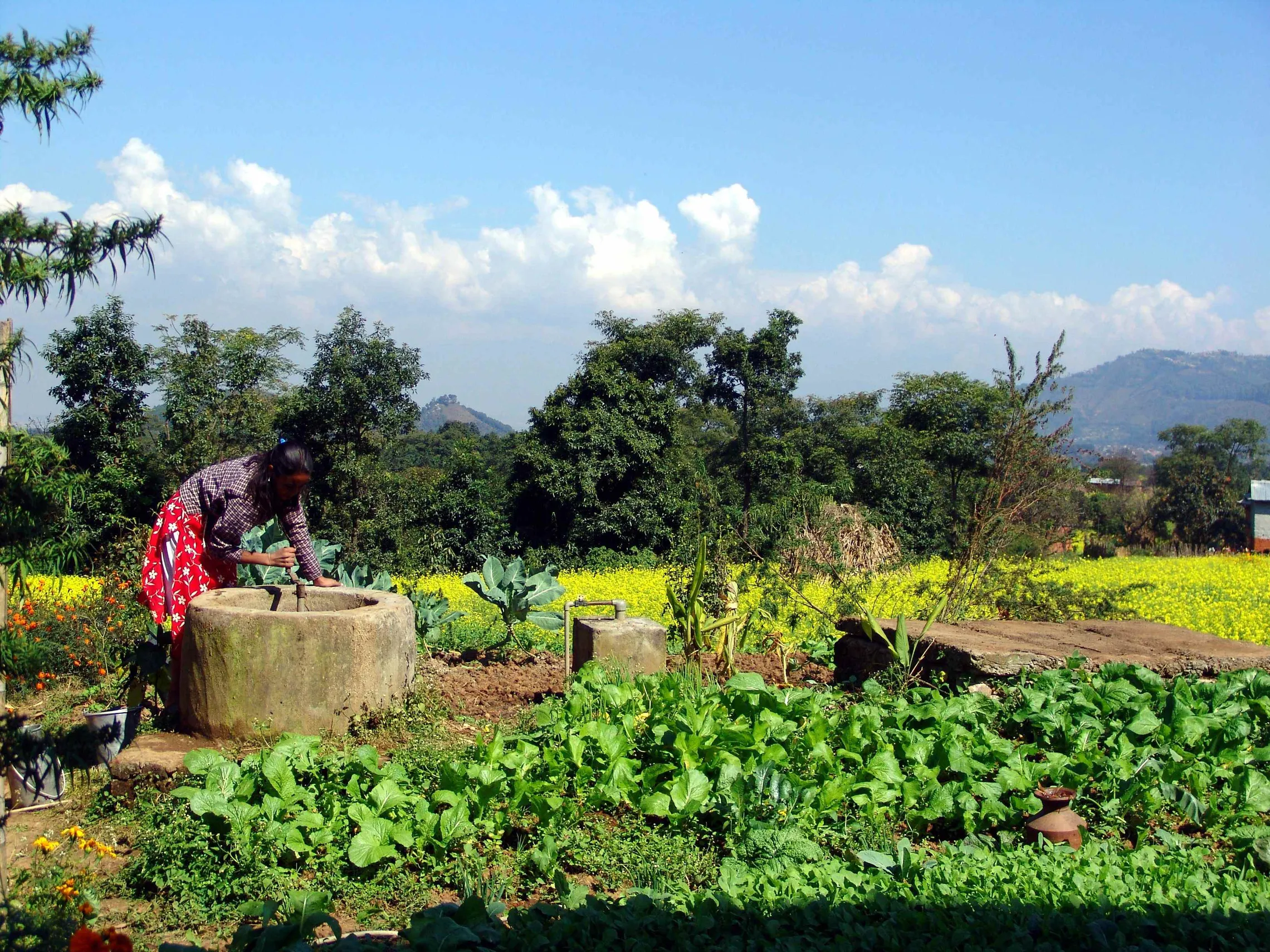Rural communities worldwide adopt biodigesters for livelihoods and the climate
Rural communities around the world are using biodigesters to improve clean energy, sustainable food production, and water and sanitation—strengthening climate resilience while improving health and livelihoods.

It feels like you are burning money when you use liquefied petroleum gas, especially when we get biogas for free.
Saraswati BhandariFarmer, Nepal
For over a decade now, Saraswati Bhandari, who belongs to a farming family in Pokhara Municipality, central Nepal, says she has been running her household using a 6m³ biodigester.
These are closed systems that turn organic waste into biogas which is used as cooking fuel, and bio-slurry which is an organic fertiliser for crops. A simple but powerful innovation that saves costs, and converts waste into climate solutions—helping reduce emissions, easing pressure on forests and regenerating depleted soil.
Bhandari’s biodigester is fed with the dung of the buffalo reared on her farm, and organic waste coming from a nearby tea shop and one of her toilets, which is connected to the plant. This, in turn, gives her bio-slurry for her backyard vegetable garden and fuel to cook two main meals and an evening snack for her family of six every day.
Liquefied petroleum gas (LPG), a popular source of cooking fuel, is used only sparingly. Bhandari says she saves up to Rs 1,500 (approximately US$ 11) per month by having a biogas plant.

A biogas plant user in Chapagaun village, Godawari Municipality, central Nepal, where biodigesters are contributing to multiple social and economic benefits.
A virtuous cycle for health, livelihoods and the climate
Savings from switching to biodigesters free up household resources for investments in health, education and small-scale farming, creating a virtuous cycle where climate-friendly energy drives broader social and economic benefits.
This is true for families who have adopted this technology across the world. In Bhutan, a 2022 study indicated that it has resulted in an average cost reduction of US$ 375 for each biodigester per year. Households in Uganda saved up to US$ 240 every year, according to a 2023 report. Yearly savings came up to US$ 108 (2018 report) for Vietnam and US$ 170 for Cambodia (2013).
Since launching its first biogas programme in Nepal in 1992, SNV has supported biodigester projects in 27 countries across Asia, Africa and Latin America. By 2022, over one million household biodigesters have been installed, and about four million people have been able to benefit from them.
The patterns of energy consumption of a household are critical to climate mitigation efforts. Turning to biogas significantly reduces emissions: a 6m³ biodigester can reduce between 2 and 8 tons of CO₂ per year. It also leads to a reduced need for biomass and deforestation.

Bio-fertilisers, such as this one used in Ethiopia, result in better soil health, improve crop yields and reduce emissions.
Bio-fertilisers (bio-slurry) also hold immense potential to transform global agrifood systems in the context of climate change, improving soil health and yields, and cutting emissions. This closely aligns with the theme for this year’s World Food Day, which calls on communities to build a sustainable and food-secure future for all.
In countries like Kenya, up to 89% of biodigester owners use bio-slurry, either composted or applied directly. This reduces the use of synthetic fertilisers, known for their high greenhouse gas emissions, particularly N₂O (nitrous oxide) and leads to significant savings. The leftover slurry is sold commercially as a liquid or dried organic fertiliser. This is particularly common in Burkina Faso, where surplus compost has proved lucrative for several farmers.
Apart from this, there are also general health benefits. First, traditional wood-burning stoves worsen air quality and have adverse effects on people’s health. According to the World Health Organization, around 2.1 billion people worldwide use inefficient cooking methods. This means roughly one-third of the world’s population faces this challenge, and could benefit from cleaner air made possible by biodigesters.
Second, most biodigesters have toilets or latrines connected to them. This pushes rural households where there are no built-in structures for toilets to construct them, contributing to preventing the risks attached to open defecation. In cases where there are toilets, connection to a biodigester improves hygiene through reduced manipulation of excrement and reduced odour.
Biodigesters therefore carry multiple benefits across interconnected systems: for climate resilience, for health and for livelihoods.
By simultaneously boosting agriculture through nutrient-rich organic fertiliser, reducing dependence on CO₂-emitting cooking fuels, and supporting better water and sanitation, they demonstrate how working holistically leads to more effective and sustainable outcomes.

Biogas used for cooking in Zambia. This simple innovation not only saves costs, but improves air quality and health.
Impact on gender, youth and financial inclusion
Biodigester programmes can also positively influence gender equality, youth and financial inclusion. While some have dedicated strategies, others lack gender measures or progress monitoring.
One thing is certain, however: saving time on firewood collection and cooking—a task that is exclusively reserved for women—is an important achievement. Surveys indicate time savings of 35 minutes per day on cooking activities in association with biogas adoption, and a reduction of 7.7 hours per week on activities perceived as drudgery.
Bhandari remembers spending hours in a smoke-filled kitchen, scrubbing soot from blackened utensils and walking to the forest nearby to get wood. Her biodigester, however, has changed this routine for the better. Cooking is no longer a gendered task in her household. Since biogas cooking is quicker and easier compared to firewood cooking, her husband and son also partake in the chores.
In our house, there is no traditional thinking that women's place is only in the kitchen…Anyone having spare time could work in the kitchen
Asmita AcharyaSaraswati Bhandari’s daughter-in-law, Nepal
In addition to impacting gender dynamics, biodigester programmes alter the lives of young people in rural regions of low-income countries. The installation of a biodigester creates jobs through the construction, maintenance and repair of the plants. One brick-and-mortar structure typically takes 10 days to build, with one skilled worker (the mason) and between two and three unskilled labourers. Sometimes, the introduction of such new technologies to remote areas also sparks entrepreneurial instincts among young people there.
A case in point is Oscar Mwale, a mason-turned-businessman from Zambia’s Katete district. With the technical know-how that he acquired from training sessions in his village conducted as part of SNV’s INCREASE project, Mwale founded a company that now employs eight other youth from the area. Together, they have helped construct 24 biodigesters so far.
Every time I meet a young person, I take the time to tell them my story from a young village boy who could not complete his education to a company owner…this story I proudly wear on the sleeve of my hands.
Oscar MwaleMason-turned-businessman, Zambia
Further accelerating the sustainable biodigester market is sure to build a stronger ecosystem for aspiring entrepreneurs like Mwale. In this way, SNV aims to support and impact the lives of 50 million people worldwide by 2030. The introduction of prefabricated biodigesters, digitisation initiatives and easier access to carbon finance are expected to boost this process.
Looking ahead, biodigesters can play a pivotal role in turning global climate commitments into concrete local actions. By empowering households and communities to generate clean energy, regenerate soils and reduce emissions, they prove that locally led solutions are essential to achieving a resilient future.